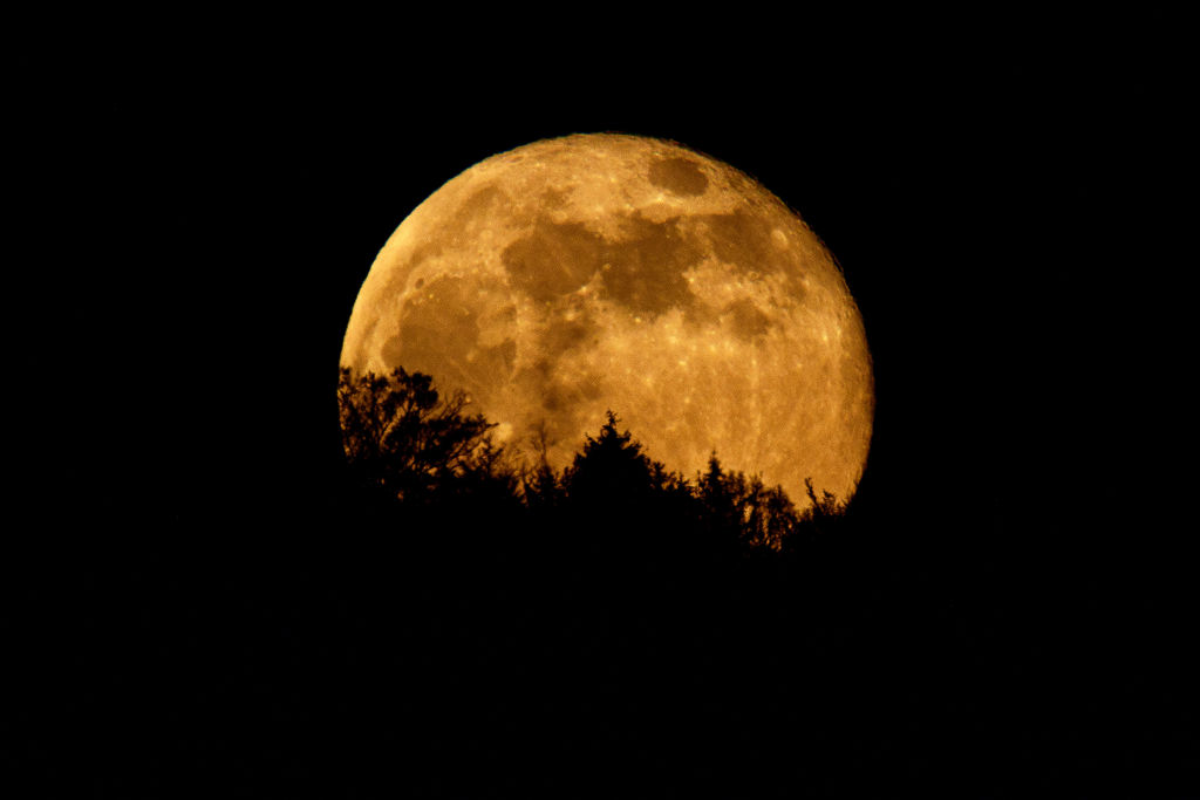Get ready for February’s full moon, also known as the snow moon, to shine brightly on Saturday as a celestial spotlight in the night sky. According Earth Heaven, the moon will peak at 7:30 a.m. ET on Saturday. However, to observers, the moon will appear full for a few days. Therefore, the optimal times to see it would be the nights before and after its peak.
Dubbed the Snow Moon due to heavy February snowfall in certain regions of the US, the golden sphere will look like a regular full moon. However, this micromoon may appear a little smaller than usual. An image of last year’s Snow Moon cooling over Stonehenge circulated on X (formerly Twitter). The image shows how amazing nature can be.
Look up tonight to see the second full moon of 2024, known as the Snow Moon.
📷: The Snow Moon setting at Stonehenge in February 2023, photo by Nick Bull. pic.twitter.com/hjjk5cWU4w
-Stonehenge (@EH_Stonehenge) February 24, 2024
What makes the snow moon stand out from standard full moons?
During a full moon, the moon, Earth, and sun align in that sequence. In February, the full moon will coincide with the moon furthest from Earth in its elliptical orbit, known as apogee. This micromoon will appear about 30% dimmer than usual, offering a clearer view of nearby celestial objects due to less bright interference.
This year, the Snow Moon will light up the sky along with Leo’s brightest star, Regulus. When the moon reaches its maximum point on the night of February 23, it is possible to observe how the star shines just below the lunar orb.
Tips on how to best see this year’s snow moon
Moon enthusiasts can appreciate viewing the moon without needing any special equipment, although binoculars can enhance the view of its features and craters. Clear skies are ideal for viewing the full moon, but even in slightly cloudy weather, the moon may occasionally peek through the clouds.
Of the 12 full moons of 2024, February’s full moon stands out as the only micromoon of the year. By contrast, the September and October lunar events are predicted to be supermoons, as reported Earth Heaven.
There are several interpretations for a supermoon, generally describing a full moon that appears larger and brighter due to its proximity to Earth. Astronomers suggest this happens when the moon is within 90% of perigee, its closest point in orbit to Earth.
When the Snow Moon appears in a big orange style, it’s the perfect time for early evening stargazing. Look up tonight, February 24, 2024, to see this celestial spectacle in your danger zone.
Categories: Biography
Source: vcmp.edu.vn
